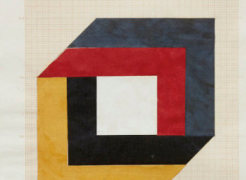
Concrete Remains: Postwar and Contemporary Art from Brazil
Curated by Jacopo Crivelli Visconti
May 9 – June 22, 2013
Denis Gardarin Gallery (as Tierney Gardarin) is pleased to present Concrete Remains: Postwar and Contemporary Art from Brazil, a group exhibition curated by Jacopo Crivelli Visconti and opening to the public on Thursday May 9, 2013. A special talk by the curator and walkthrough of the exhibition will be held on Saturday, May 11 at 3:00 p.m.
Concrete Remains will be on view at Tierney Gardarin through June 22, 2013. Artists included in this exhibition are: Geraldo de Barros, Sergio Camargo, Amilcar de Castro, Lygia Clark, Iran do Espirito Santo, Fernanda Gomes, Jac Leirner, Hélio Oiticica, and Daniel Steegmann Mangrané.
Concrete Remains examines different moments of Brazilian art of the 20th and 21st centuries, specifically looking at the lasting legacy of Concrete art and Neoconcretism. Artworks by significant figures such as Amilcar de Castro and Hélio Oiticica will be juxtaposed with pieces by contemporary Brazilian artists, including Iran do Espirito Santo, Fernanda Gomes, and Jac Leirner. This exhibition will demonstrate both formal and conceptual affinities between generations, and the growing importance of these artists' work within the context of a global art world. A variety of media will be featured, including photographs, works on paper, sculpture and installation.
In 1959 a group of Brazilian artists—including Amilcar de Castro and Lygia Clark—published the Neo-Concrete Manifesto. In this manifesto they argued for a continued preoccupation with abstraction and certain tenets of Concrete Art, but suggested that a greater freedom of expression was needed, emphasizing the subjectivity of both artist and viewer and moving beyond rationalism and formalism. These artists were not dogmatic in their definition of art, and their expansive approach allowed for a completely new kind of art to flourish in Brazil. Often geometric in appearance, these artworks were concerned with the activation of their surrounding space and the conversion of the viewer from passive to active participant in the creation of meaning.
Untitled, by Amilcar de Castro, exemplifies an adherence to these early Neoconcretionist principles: extreme economy of form, elegant lines, and a richness of surface that proves seductive in its simplicity. As the viewer walks around the piece subtle transformations occur: shifts of light and shadow, mass and void. Castro’s engagement of environment through form bears comparison to recent works by Jac Leirner, whose Vagos also have an abstract sensibility but a decisively humorous sense of space and structure. Twist, a work by Iran do Espirito Santo, similarly animates its architectural environs through its austere geometry, its minimal folds echoing those of Geraldo de Barros’ Fotoformas.
About the Curator: Jacopo Crivelli Visconti is a writer and curator based in São Paulo, Brazil. He holds a degree in Humanities from the University of Naples and a Ph.D. from the University of Sao Paulo, Faculty of Architecture and Urbanism (FAU-USP). As curator of the Fundação Bienal de São Paulo (2007-2009), he was responsible for the Brazilian Pavilion in the 52nd Venice Biennial, the Cuenca Biennial (Ecuador) and the Lulea Biennial (Sweden), among other international exhibitions. His texts and essays have appeared in numerous contemporary art, architecture and design magazines, in addition to exhibition catalogues and artists’ monographs.





